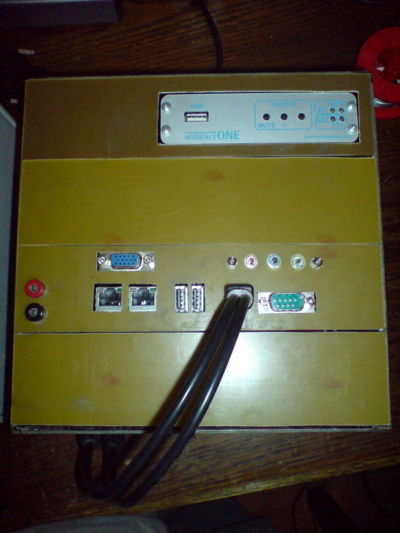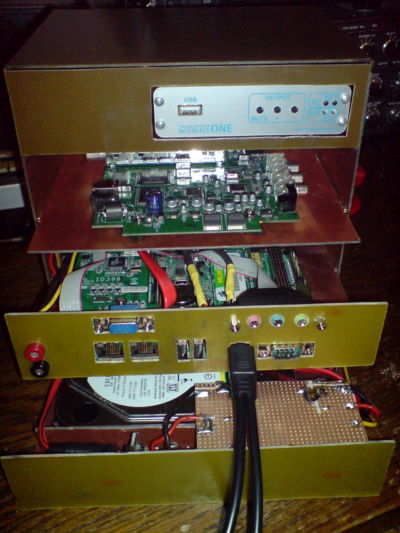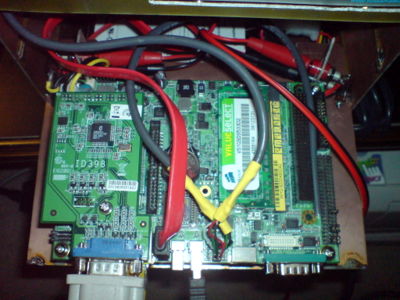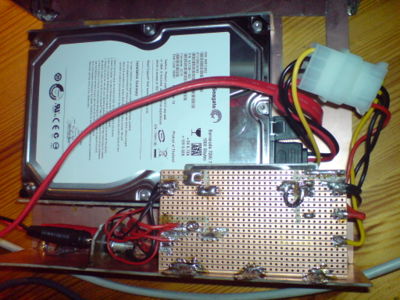A Low-Power Combined Echolink and ATV Server: Unterschied zwischen den Versionen
Dl8rds (Diskussion | Beiträge) (New page: Things evolve, and after initial attempts to set up an Echolink relay on basis of OpenWRT, I decided that porting the SVXLink software is a little too time-consuming. And since Intel's...) |
Dl8rds (Diskussion | Beiträge) |
||
| Zeile 6: | Zeile 6: | ||
* consume as little power as possible to allow permanent cost-efficient operation | * consume as little power as possible to allow permanent cost-efficient operation | ||
| − | This project is a supertarget of the following projects / items | + | This project is a supertarget of the following projects / items, while absoleting some of them. |
* [[Setting up a remote, electrically independent, low power EchoLink relay]] | * [[Setting up a remote, electrically independent, low power EchoLink relay]] | ||
| + | * [[Porting SVXLink to OpenWRT]] - given up. Using standard Linux instead. | ||
| + | * [[Building a Linux Ubuntu package of TheLinkBox]] | ||
| + | * [[Compiling a TheLinkBox package for OpenWRT]] - obsoleted | ||
| + | * [[Compiling a Hamlib package for OpenWRT]] - obsoleted | ||
| + | |||
| + | It makes use of the following hardware: | ||
| + | * [[Kenwood TR-7625]] | ||
| + | * [[BX-120 USB-Transceiverinterface mit integrierter Soundkarte, Komplettbausatz|BX-120 Transceiver Interface]] | ||
| + | * [[IB882-16]] | ||
| + | * [[Hauppauge PVR-2]] | ||
| + | |||
| + | First measurements show that the IB882 using the 530 series Intel ATOM CPU is power-savong, but less than you'd expect. Marketing people said that the power consumption was just at around 4 watts, but this is probably only true for the CPU itself. The rest of the board also consumes some power, and that's quite a bit more than the CPU itself. I measured a current of around 1 Ampere, making about 13,8 Watts total. This, given that the Hauppauge PVR is not yet connected! | ||
| + | |||
| + | At least, I already built a nice case that will hold the boards. This time, I didn't build a single case for each board, but since several components demanded some housing, I decided to build a big case for four components at a time. In order to keep everything modular and support easy maintenance, I used small U-profiles from RC model construction that allow me to slide the boards in and out. Here are some photos: | ||
| + | |||
| + | [[image:echolinkserver-total.jpg|400px]] [[image:echolinkserver-einschuebe-geoeffnet.jpg|400px]] | ||
| + | [[image:echolinkserver-CPU-Board.jpg|400px]] [[image:echolinkserver-platte.jpg|400px]] | ||
Version vom 14. Juni 2009, 12:30 Uhr
Things evolve, and after initial attempts to set up an Echolink relay on basis of OpenWRT, I decided that porting the SVXLink software is a little too time-consuming. And since Intel's ATOM CPUs are available now, it seems reasonable to choose one of those and charge the machine with some more jobs. For this reason, I decided to build some hardware for this scenario:
- act as an Echolink node to let me speak to my buddies from DB0MHB on our working frequency 144.510 MHz.
- record video transmissions from DB0MHB, convert them into something you can stream over the internet and act as a streaming server.
- provide mass storage and act as a playout server for ATV.
- consume as little power as possible to allow permanent cost-efficient operation
This project is a supertarget of the following projects / items, while absoleting some of them.
- Setting up a remote, electrically independent, low power EchoLink relay
- Porting SVXLink to OpenWRT - given up. Using standard Linux instead.
- Building a Linux Ubuntu package of TheLinkBox
- Compiling a TheLinkBox package for OpenWRT - obsoleted
- Compiling a Hamlib package for OpenWRT - obsoleted
It makes use of the following hardware:
First measurements show that the IB882 using the 530 series Intel ATOM CPU is power-savong, but less than you'd expect. Marketing people said that the power consumption was just at around 4 watts, but this is probably only true for the CPU itself. The rest of the board also consumes some power, and that's quite a bit more than the CPU itself. I measured a current of around 1 Ampere, making about 13,8 Watts total. This, given that the Hauppauge PVR is not yet connected!
At least, I already built a nice case that will hold the boards. This time, I didn't build a single case for each board, but since several components demanded some housing, I decided to build a big case for four components at a time. In order to keep everything modular and support easy maintenance, I used small U-profiles from RC model construction that allow me to slide the boards in and out. Here are some photos:



